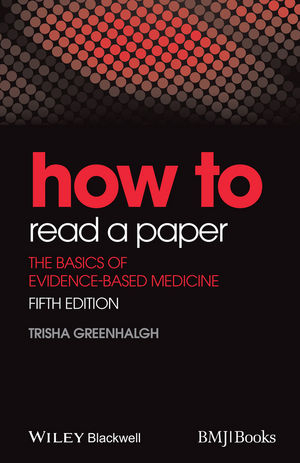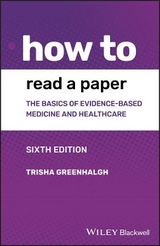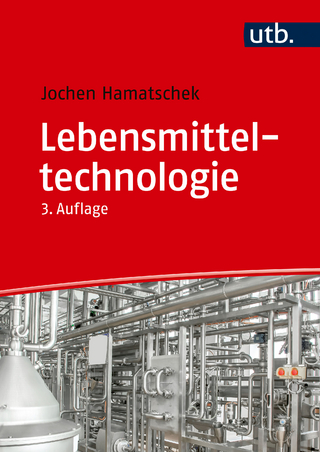
How to Read a Paper
Wiley-Blackwell (an imprint of John Wiley & Sons Ltd) (Verlag)
978-1-118-80096-6 (ISBN)
- Titel erscheint in neuer Auflage
- Artikel merken
The best-selling introduction to evidence-based medicine In a clear and engaging style, How to Read a Paper demystifies evidence-based medicine and explains how to critically appraise published research and also put the findings into practice. An ideal introduction to evidence-based medicine, How to Read a Paper explains what to look for in different types of papers and how best to evaluate the literature and then implement the findings in an evidence-based, patient-centred way. Helpful checklist summaries of the key points in each chapter provide a useful framework for applying the principles of evidence-based medicine in everyday practice. This fifth edition has been fully updated with new examples and references to reflect recent developments and current practice. It also includes two new chapters on applying evidence-based medicine with patients and on the common criticisms of evidence-based medicine and responses. How to Read a Paper is a standard text for medical and nursing schools as well as a friendly guide for everyone wanting to teach or learn the basics of evidence-based medicine.
Trisha Greenhalgh OBE, FRCGP, FRCP, Professor of Primary Health Care and Dean for Research Impact, Barts and the London School of Medicine and Dentistry, London, UK
Foreword to the first edition by Professor Sir DavidWeatherall, xiii Preface to the first edition: do you need to read this book? xvii Preface to the fifth edition, xix Acknowledgements, xxi Chapter 1 Why read papers at all? 1 Does evidence-based medicine simply mean reading papers in medical journals ? 1 Why do people sometimes groan when you mention evidence-based medicine? 4 Before you start: formulate the problem, 10 References, 13 Chapter 2 Searching the literature, 15 What are you looking for? 16 Levels upon levels of evidence, 17 Synthesised sources: systems, summaries and syntheses, 17 Pre-appraised sources: synopses of systematic reviews and primary studies, 21 Specialised resources, 22 Primary studies tackling the jungle, 23 One-stop shopping: federated search engines, 24 Asking for help and asking around, 25 Online tutorials for effective searching, 26 References, 26 Chapter 3 Getting your bearings: what is this paper about? 28 The science of trashing papers, 28 Three preliminary questions to get your bearings, 30 Randomised controlled trials, 34 Cohort studies, 38 Case control studies, 39 Cross-sectional surveys, 40 Case reports, 40 The traditional hierarchy of evidence, 41 A note on ethical considerations, 42 References, 43 Chapter 4 Assessing methodological quality, 45 Was the study original? 45 Whom is the study about? 46 Was the design of the study sensible? 47 Was systematic bias avoided or minimised? 49 Was assessment blind ? 53 Were preliminary statistical questions addressed? 54 Summing up, 57 References, 58 Chapter 5 Statistics for the non-statistician, 60 How can non-statisticians evaluate statistical tests? 60 Have the authors set the scene correctly? 62 Paired data, tails and outliers, 68 Correlation, regression and causation, 70 Probability and confidence, 72 The bottom line, 74 Summary, 76 References, 76 Chapter 6 Papers that report trials of drug treatments and other simple interventions, 78 Evidence and marketing, 78 Making decisions about therapy, 80 Surrogate endpoints, 81 What information to expect in a paper describing a randomised controlled trial: the CONSORT statement, 84 Getting worthwhile evidence out of a pharmaceutical representative, 86 References, 88 Chapter 7 Papers that report trials of complex interventions, 90 Complex interventions, 90 Ten questions to ask about a paper describing a complex intervention, 92 References, 97 Chapter 8 Papers that report diagnostic or screening tests, 99 Ten men in the dock, 99 Validating diagnostic tests against a gold standard, 100 Ten questions to ask about a paper that claims to validate a diagnostic or screening test, 105 Likelihood ratios, 110 Clinical prediction rules, 111 References, 113 Chapter 9 Papers that summarise other papers (systematic reviews and meta-analyses), 116 When is a review systematic? 116 Evaluating systematic reviews, 119 Meta-analysis for the non-statistician, 124 Explaining heterogeneity, 128 New approaches to systematic review, 132 References, 132 Chapter 10 Papers that tell you what to do (guidelines), 135 The great guidelines debate, 135 How can we help ensure that evidence-based guidelines are followed? 138 Ten questions to ask about a clinical guideline, 141 References, 148 Chapter 11 Papers that tell you what things cost (economic analyses), 150 What is economic analysis? 150 Measuring costs and benefits of health interventions, 151 References, 162 Chapter 12 Papers that go beyond numbers (qualitative research), 164 What is qualitative research? 164 Evaluating papers that describe qualitative research, 168 References, 176 Chapter 13 Papers that report questionnaire research, 178 The rise and rise of questionnaire research, 178 Ten questions to ask about a paper describing a questionnaire study, 179 References, 188 Chapter 14 Papers that report quality improvement case studies, 190 What are quality improvement studies and how should we research them? 190 Ten questions to ask about a paper describing a quality improvement initiative, 193 References, 200 Chapter 15 Getting evidence into practice, 202 Why are health professionals slow to adopt evidence-based practice? 202 How much avoidable suffering is caused by failing to implement evidence? 204 How can we influence health professionals behaviour to promote evidence-based practice? 205 What does an evidence-based organisation look like? 210 How can we help organisations develop the appropriate structures, systems and values to support evidence-based practice? 212 References, 217 Chapter 16 Applying evidence with patients, 221 The patient perspective, 221 PROMs, 223 Shared decision-making, 224 Option grids, 226 n of 1 trials and other individualised approaches, 229 References, 230 Chapter 17 Criticisms of evidence-based medicine, 233 What s wrong with EBM when it s done badly? 233 What s wrong with EBM when it s done well? 235 Why is evidence-based policymaking so hard to achieve? 238 References, 240 Appendix 1 Checklists for finding, appraising and implementing evidence, 242 Appendix 2 Assessing the effects of an intervention, 252 Index, 253
| Erscheint lt. Verlag | 7.4.2014 |
|---|---|
| Reihe/Serie | HOW - How To |
| Verlagsort | Chicester |
| Sprache | englisch |
| Maße | 217 x 140 mm |
| Gewicht | 320 g |
| Einbandart | kartoniert |
| Themenwelt | Medizin / Pharmazie ► Medizinische Fachgebiete |
| ISBN-10 | 1-118-80096-6 / 1118800966 |
| ISBN-13 | 978-1-118-80096-6 / 9781118800966 |
| Zustand | Neuware |
| Informationen gemäß Produktsicherheitsverordnung (GPSR) | |
| Haben Sie eine Frage zum Produkt? |
aus dem Bereich



